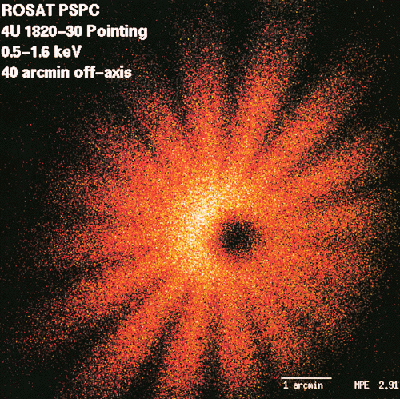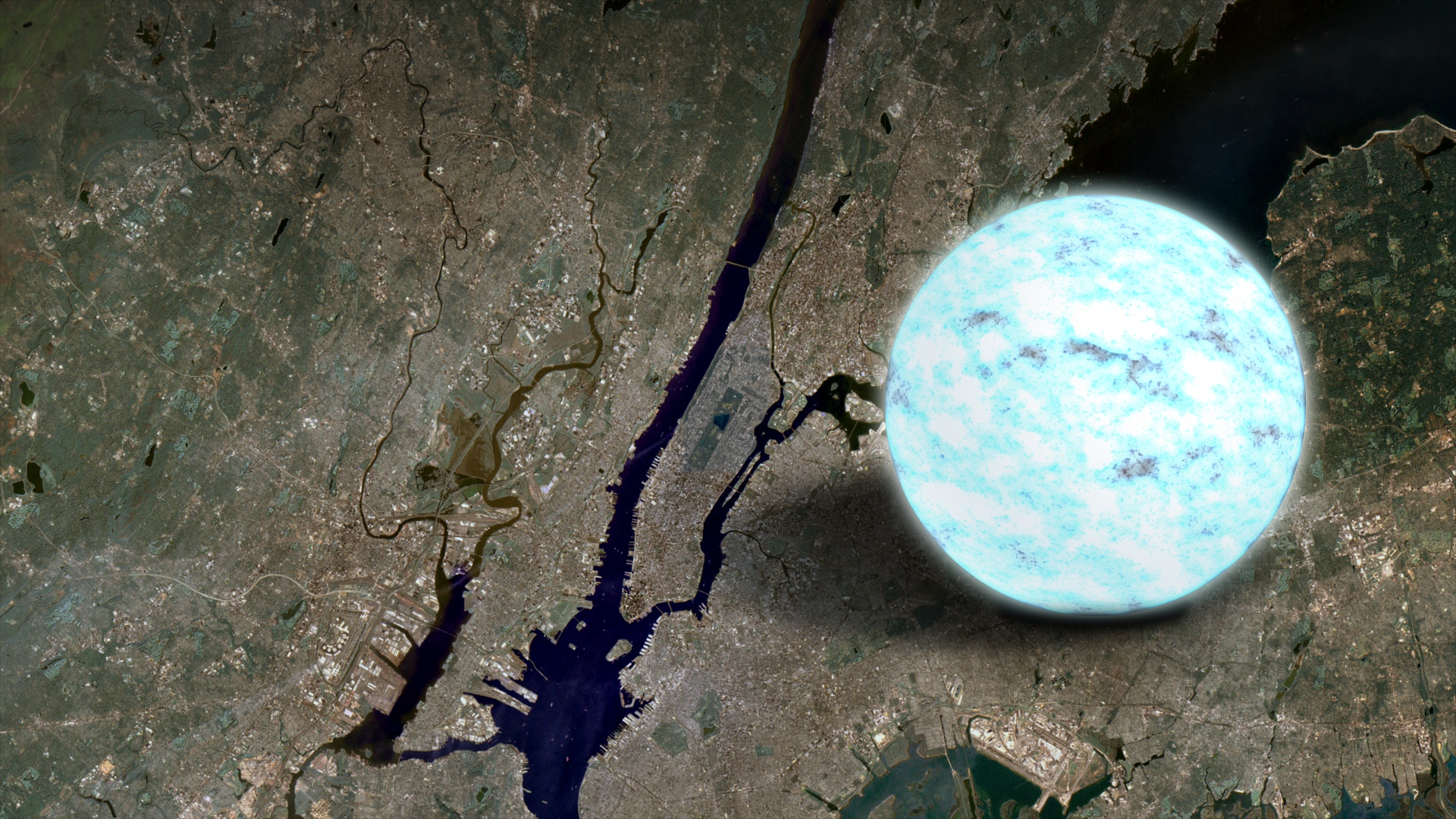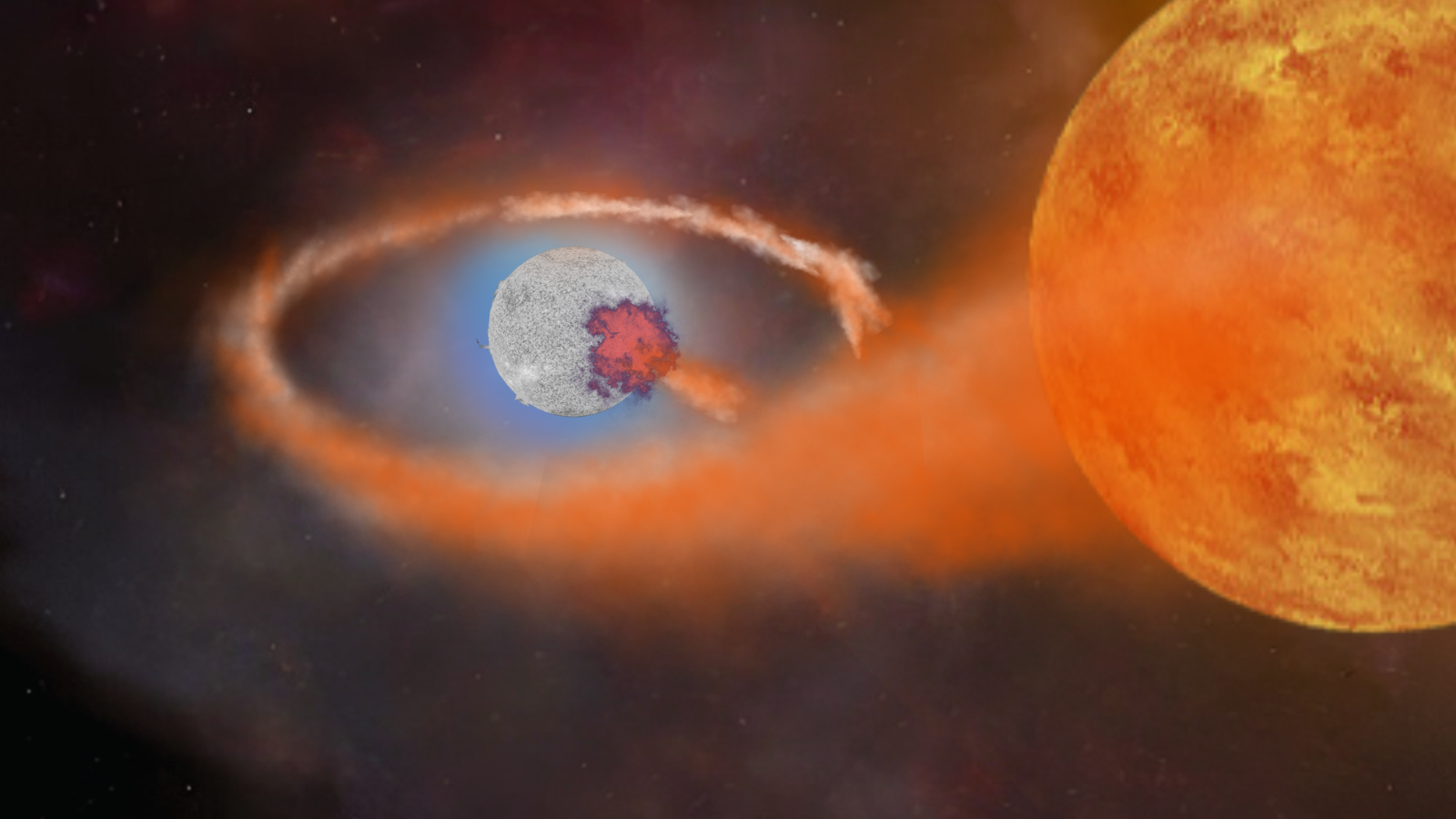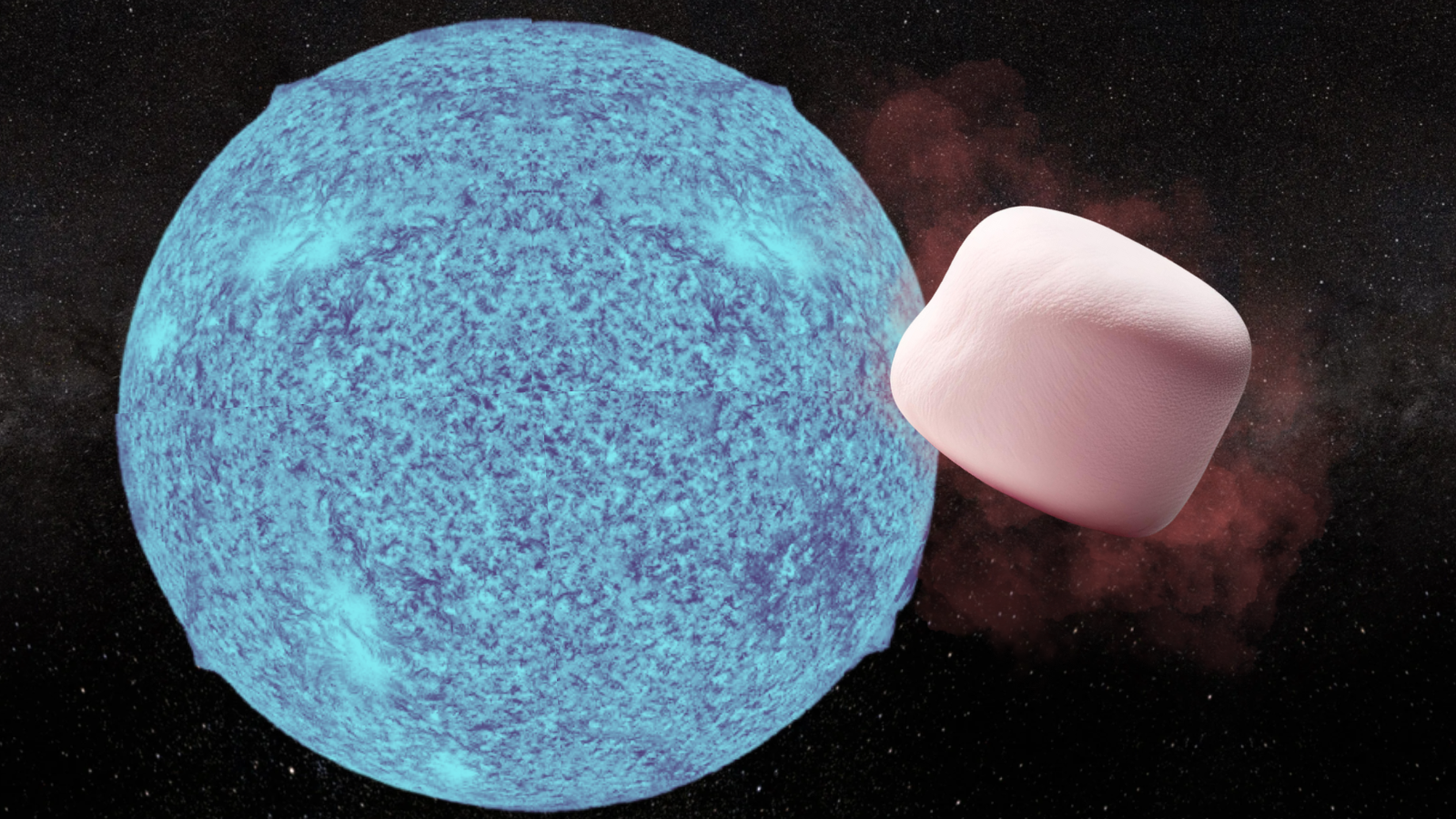
Astronomers have discovered a "dead star" neutron star is spinning at an incredible 716 times a second, making it the joint fastest-spinning cosmic body ever seen. Not only this, but the neutron star's surface is also erupting with explosions as powerful as detonating atomic bombs.
The team discovered the extreme stellar remnant using NASA's X-ray telescope Neutron star Interior Composition Explorer (NICER), which is mounted on the exterior of the International Space Station (ISS).
The exploding speed demon neutron star in question is part of the binary system 4U 1820-30, which sits in the globular cluster NGC 6624, which is located toward the heart of the Milky Way around 26 light-years from Earth in the constellation of Sagittarius.
"We were studying thermonuclear explosions from this system and then found remarkable oscillations, suggesting a neutron star spinning around its center axis at an astounding 716 times per second," team member Gaurava K. Jaisawal of DTU Space said in a statement.
When it comes to its rotation rate, the only body that comes close to the neutron star in 4U 1820-30 is another neutron star, PSR J1748–2446, which also spins 716 times a second, or 42,960 times per minute.

The other occupant of the 4U 1820-30 binary is another stellar corpse, a white dwarf, the kind of remnant that stars with masses comparable to the sun leave behind when they die. This white dwarf is also a speedster, whipping around its neutron star partner once every 11 minutes! That means this is the binary star system with the shortest orbital period ever seen.
Neutron stars like those mentioned above form when much more massive stars, with at least 8 times the mass of the sun, run out of the fuel for nuclear fusion. Stellar death is key to understanding the extreme properties of neutron stars, such as their rapid rate of spin and the thermonuclear explosions that rock their surface.
What makes neutron stars so extreme?
When a massive star runs out of fuel and can no longer fuse elements to create progressively heavier elements in its core, the outward energy or "radiation pressure" that has supported it against the inward push of its own gravity for billions of years ceases.
This causes the core of this star to rapidly collapse under its own gravity, sending shockwaves rippling out into the dying star's outer layers. This triggers a supernova explosion that rips away those outer layers and, thus, most of the star's mass.
This leaves the star's core as a stellar corpse with a mass between 1 and 2 times that of the sun. This newborn (or is it newly deceased?) neutron star has a width of just around 12 miles (20 kilometers). It is the rapid compression in diameter that causes neutron stars to spin rapidly.

This is the result of the conservation of angular momentum, and a very Earthly analogy can describe it. Picture an ice skater spinning on the ice. To increase the speed of their spin, the skater draws in their arms, and to slow down again, they spread their arms out. This happens for neutron stars, albeit on a vastly greater cosmic scale.
Neutron stars can also get a boost in rotation speed when they are in a binary tight enough to gravitationally drag matter from their companion or "donor" star. This matter carries with it angular momentum that also boosts the spin speed of the neutron star. This stolen matter is also key to understanding why neutron stars can erupt in thermonuclear explosions.

As you might imagine, cramming the mass of two suns down into a body that would fit within the border of Manhattan Island has extreme consequences. This rapid compression forces negatively charged electrons and positively charged protons together, creating a sea of neutral particles called neutrons that fill neutron stars.
This matter is the densest in the known universe. In fact, it is so dense that if a teaspoon of neutron star matter were scooped out and brought to Earth, it would weigh 10 million tons, the same as about 85,000 blue whales.
With this incredible density comes an incredibly strong gravitational influence. That means when matter heads toward a neutron star, it is accelerated to speeds of millions of miles per hour. Thus, when it hits the surface of a neutron star, this matter releases an incredible amount of energy.
To put that into context, if a marshmallow were dropped to the surface of a neutron star, it would hit with the energy of a thousand hydrogen bombs exploding simultaneously.

Additionally, when this stolen stellar matter piles up on the surface of a neutron star, it can reach critical mass and detonate in a violent thermonuclear explosion.
"During these bursts, the neutron star becomes up to 100,000 times brighter than the sun, releasing an immense amount of energy," team member and DTU Space scientist Jerome Chenevez said in the statement. "So we are dealing with very extreme events, and by studying them in detail, we get new insights into the exiting life cycles of binary star systems and the formation of elements in the universe."
NICER observed the binary system 4U 1820-30 between 2017 and 2021, during which time the DTU Space team spotted 15 thermonuclear blasts via the X-ray light they produced.
One of these explosions carried a signature that scientists call "thermonuclear burst oscillations," which had a frequency of 716 Hz. Because these burst oscillations are in lockstep with the spin rate of neutron stars, this confirmed this body is spinning 716 times a second.
"If future observations confirm this, the 4U 1820-30 neutron star would be one of the fastest-spinning objects ever observed in the universe, matched only by another neutron star called PSR J1748–2446," Jaisawal said.
The team's research was published on October 25, 2024, in The Astrophysical Journal.







